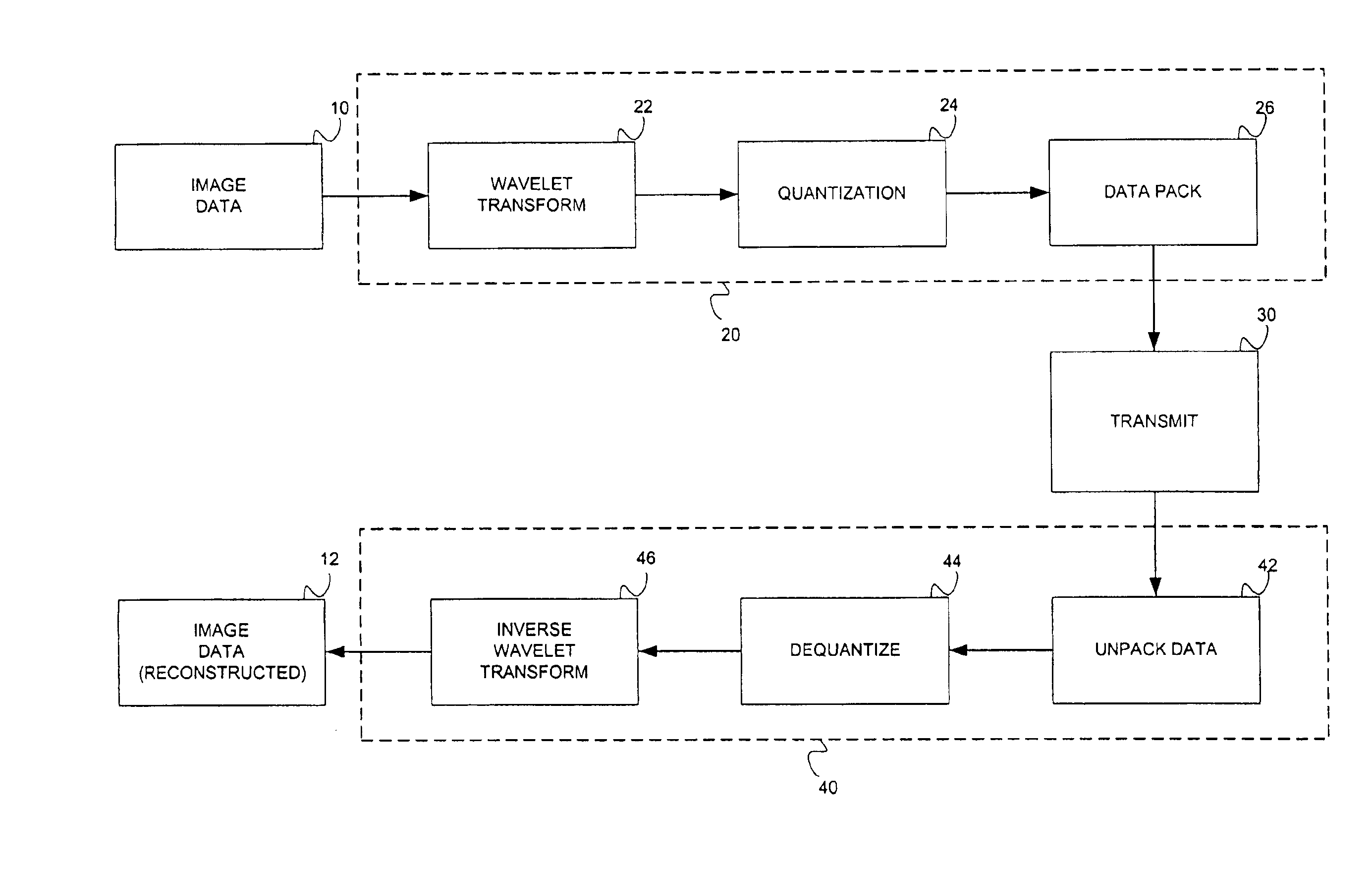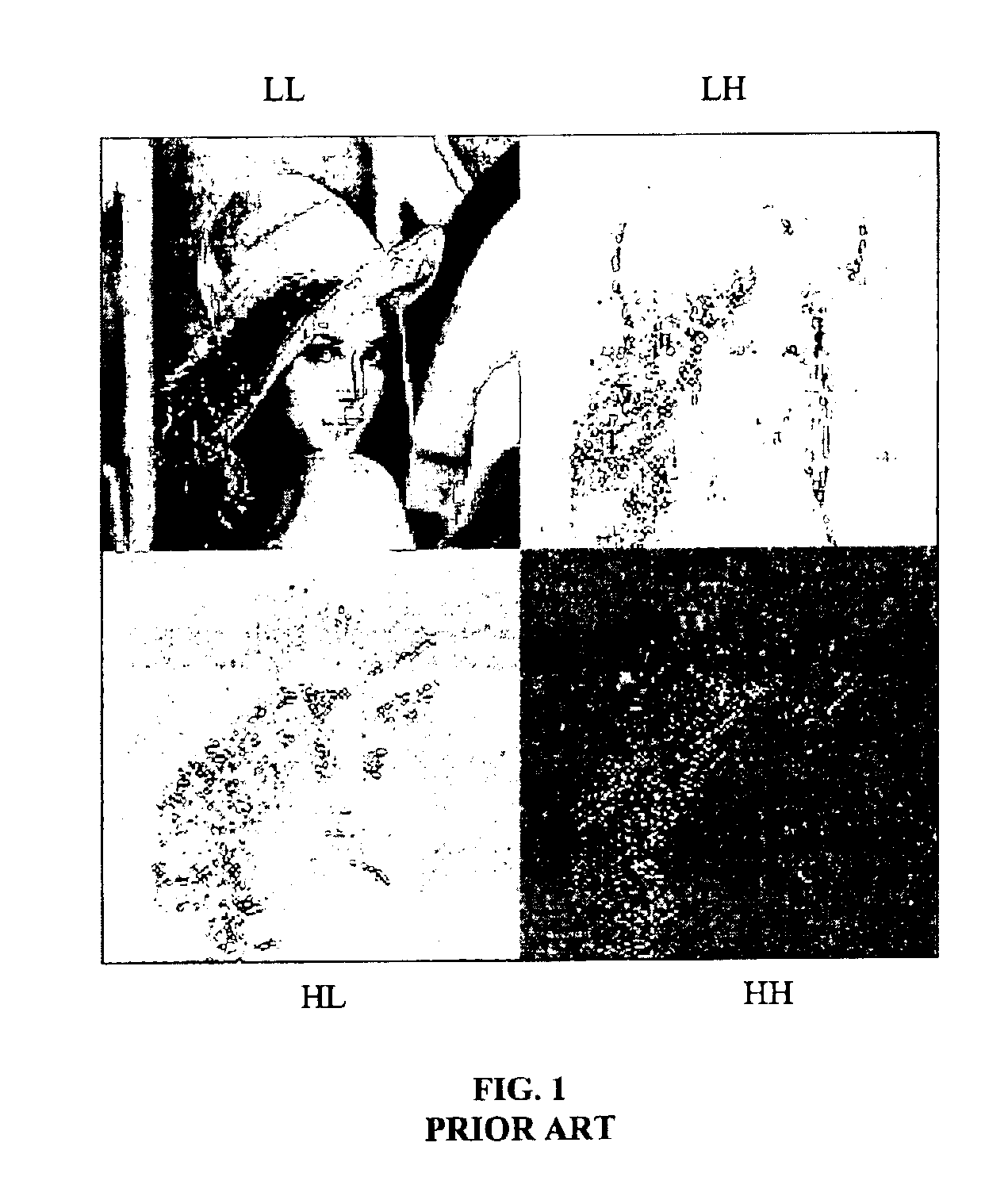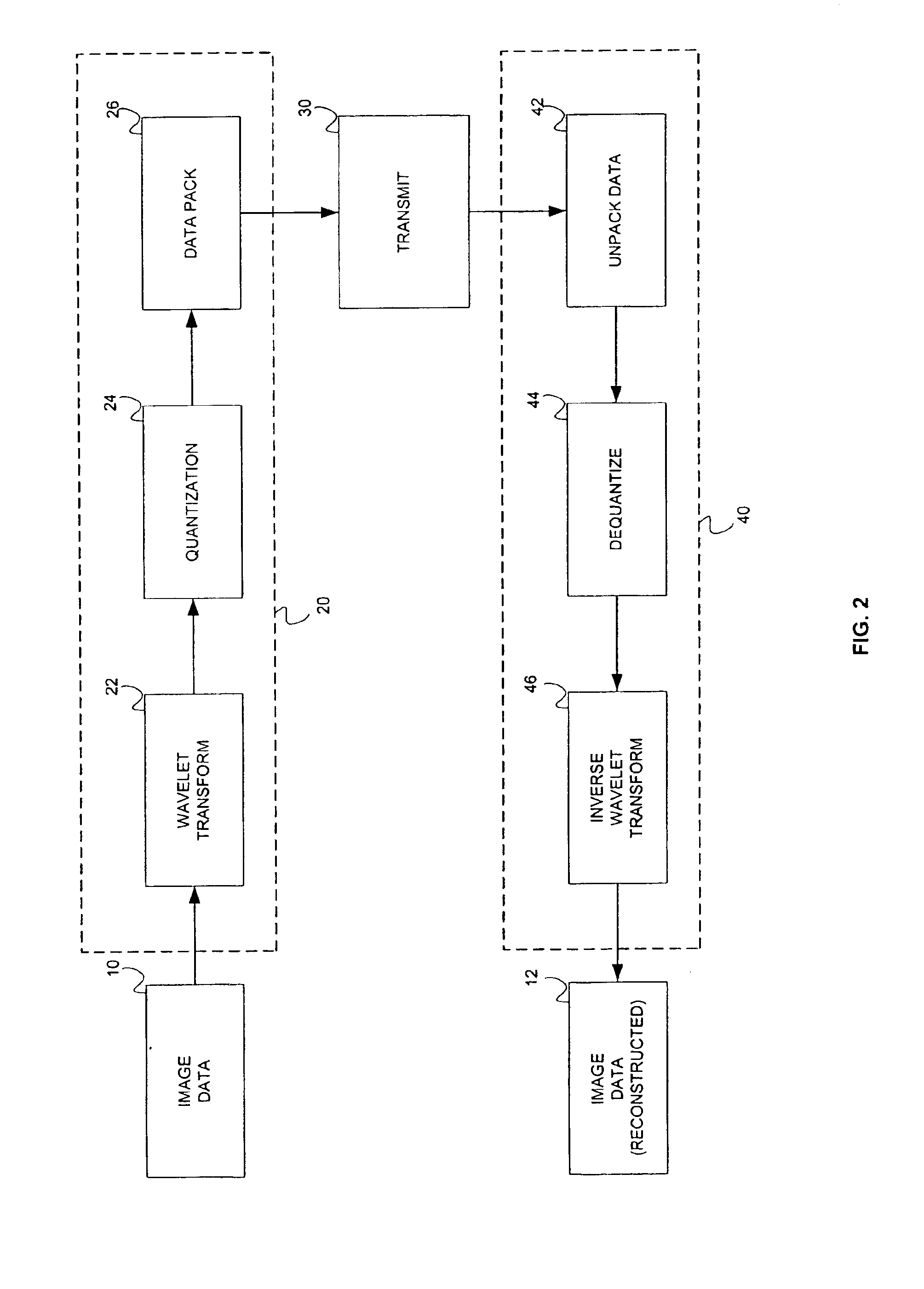Wave image compression
- Summary
- Abstract
- Description
- Claims
- Application Information
AI Technical Summary
Benefits of technology
Problems solved by technology
Method used
Image
Examples
Embodiment Construction
[0035]There is shown in FIGS. 1-16 an illustration of an embodiment of the present invention, a method and apparatus for processing a image data.
[0036]Referring to FIG. 2, the method of the embodiment uses three steps for the encoder of image compression 20—forward wavelet transform 22, quantization 24, and data packing 26. Each of the steps will be described in detail herein.
[0037]In a first embodiment of the invention, digital image data 10 having pixel values is provided to a wavelet transform process 22. Wavelet transform process 22 uses a multiple level wavelet transform, utilizing symmetric biorthogonal seven and nine tap filters. Decimation and interpolation procedures are incorporated in the wavelet transform. This allows the forward and inverse transform to be done with about half the number of multiply adds. Also, the image is mirrored at the edges before transformation, providing better image reconstruction from the quantized wavelet coefficients. Wavelet data is the outp...
PUM
 Login to View More
Login to View More Abstract
Description
Claims
Application Information
 Login to View More
Login to View More - R&D
- Intellectual Property
- Life Sciences
- Materials
- Tech Scout
- Unparalleled Data Quality
- Higher Quality Content
- 60% Fewer Hallucinations
Browse by: Latest US Patents, China's latest patents, Technical Efficacy Thesaurus, Application Domain, Technology Topic, Popular Technical Reports.
© 2025 PatSnap. All rights reserved.Legal|Privacy policy|Modern Slavery Act Transparency Statement|Sitemap|About US| Contact US: help@patsnap.com



